Quarantines, snow days, classroom extensions, and the pure love of creating—there are countless reasons why we may assign at-home learning for our students or challenge them to extend their learning beyond the classroom. But the conundrum persists, what materials do my students have access to at home? It is safe to say that no assumptions can be made about what materials are available for students to use at home. A great option is to encourage students to look around with a creative lens and use everyday objects for rich artmaking experiences.
Here are ten ideas that require zero traditional art materials for at-home artmaking!
1. Found Object Architecture
Blocks of any kind are an excellent tool for exploring architecture. But so are objects from around the home, including bowls, cups, plates, books, cans of food, and boxes. Students create a large building or an entire city using small toy characters for context.
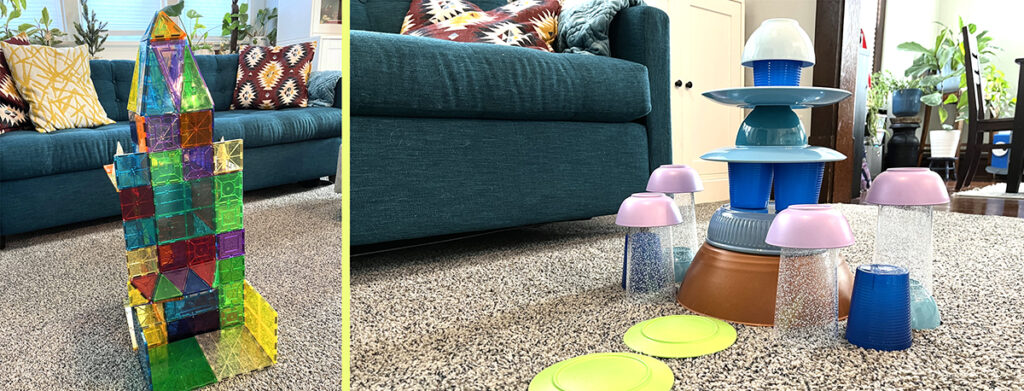
2. Forts!
Small-scale architecture is not where the fun needs to end. Have students grab blankets, sheets, and pillows. Kids of all ages delight in forming forts to crawl inside. Special attention can be paid to the interior design of the fort’s blanket-covered spaces.
3. Collected Portraits
In her classroom, elementary art teacher Casie Fanning provides students with found objects to form temporary portraits. After they are delighted by their assemblage, students snap a photo and clear the table to make another face. Students can do this at home by collecting items and combining them to form different expressive portraits without the need for glue. Cups, bottle caps, bananas, can tabs, and clothespins are possible materials to create with.
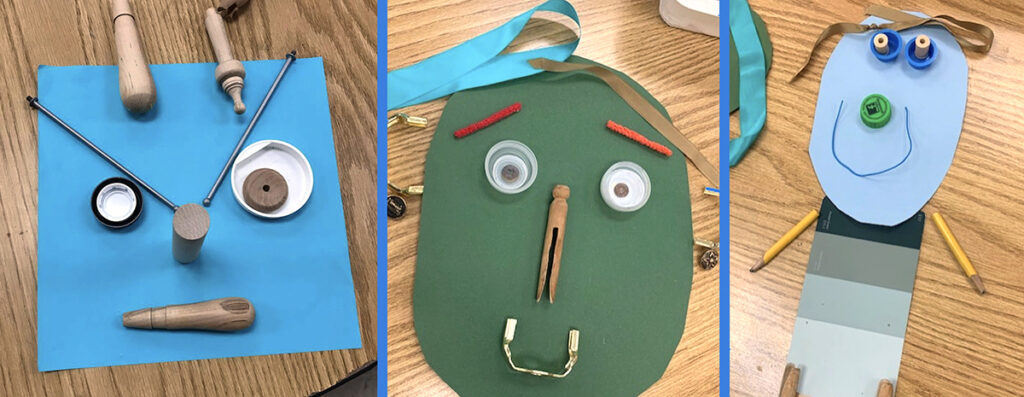
4. Fashion Design
Students combine clothing in new ways to create a whole new head-to-toe look for themselves or a family member. This includes unique combinations of colors and patterns. Who knows? Maybe an experimental juxtaposition of clothing prompts a whole new style.
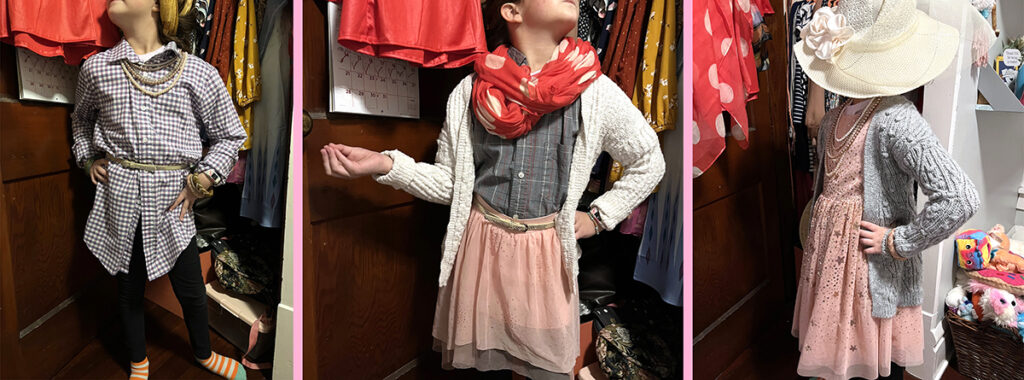
5. Nature Sculptures
Your context matters when considering how students will interact artfully with nature. Is it February in North Dakota? Challenge students to bundle up and form snow sculptures. October in Ohio? Draw inspiration from Andy Goldsworthy and gather sticks and leaves to create forms and shapes. Or December in Phoenix? Collected rocks can form non-objective designs or stacked towers of different heights.
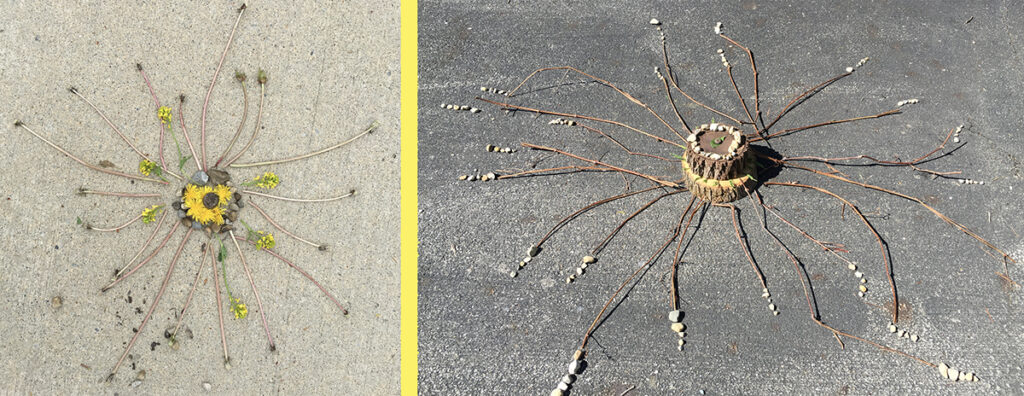
6. Food Arrangements
Breakfast, lunch, or dinner can become so much more exciting by focusing on creative and visual presentation. Famous chefs worldwide spend time arranging food on the plate to appeal to all of the senses. Students take a meal or a snack and arrange it thoughtfully for others (or themselves) to enjoy.
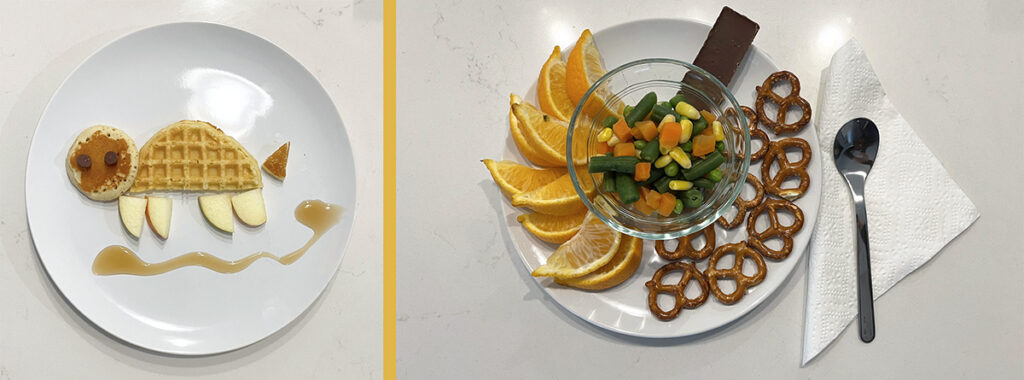
7. Junk Mail Origami
Students take junk mail headed for the recycling bin and practice their origami skills. Be sure students ask an adult before using any mail. Most folded forms require a square, necessitating students to fold a large triangle the width of the paper first and tear off the excess paper rectangle. Provide video or paper directions to fold any number of origami forms.
8. Recreated Scene
The pandemic brought on the recreating of famous artworks using people and items already at home. The fun doesn’t need to end! Collect toys and found objects from around the house to recreate scenes from favorite picture books.
9. Shadow Puppet Performance
A dark room and a flashlight (or a phone’s flashlight) are all that are needed to explore contrast and shape. Students experiment with how modifying hand placement can bring different forms or creatures to life. This exploration can include holding up other objects, toys, or student-made puppets in front of the light. A small plastic toy can appear huge as students learn about scale during storytelling.
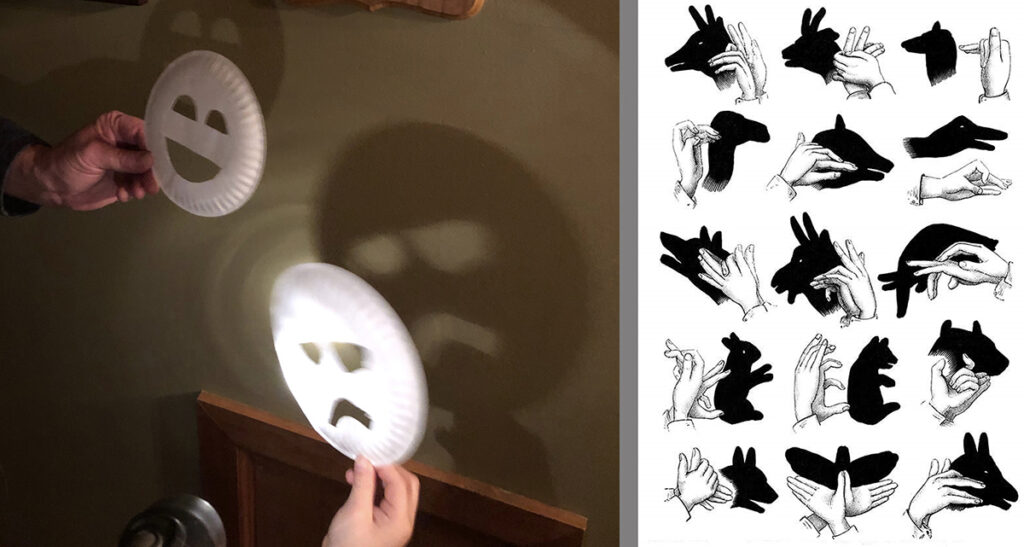
10. Radial Symmetry Designs
Radial symmetry is a design symmetrical in several directions from a center point. In this prompt, students arrange items symmetrically in round shapes, much like a flower or starburst. Anything that can be found around the house in multiples works great, such as forks, socks, napkins, plastic toys, and crackers. You can further challenge students to use their color theory knowledge for a fun twist on traditional color wheels.
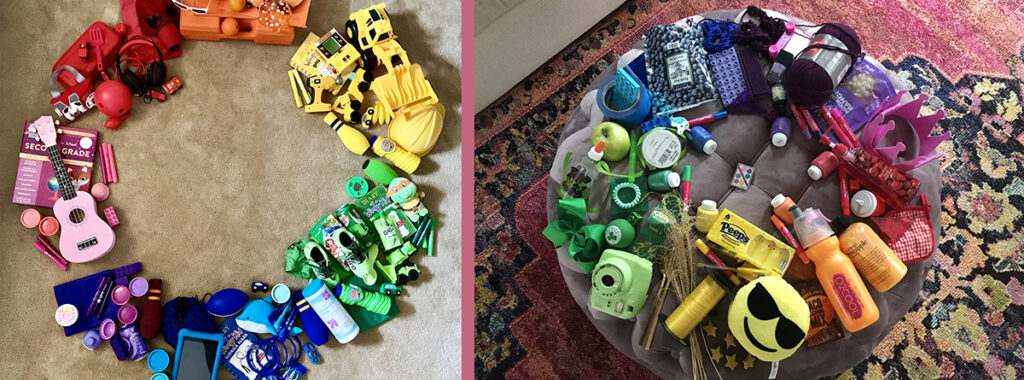
With each of these creative prompts, students can take pictures with a phone or tablet when available. Students may want to keep the photos around for their own enjoyment to remind them of the experience after it is all cleaned up. The photos can also be submitted to you if it’s an assignment. You don’t have to wait for a quarantine period or a snow day to challenge students with these creativity prompts. We want nothing more than for our students to extend their learning and enthusiasm beyond the art room. Challenge them to create works at home and discuss their efforts in class or via the school’s online platform. Encourage creative thinking no matter what materials are on hand, and who knows where these skills will take your students in the future.
Want to step things up to the next level? Check out this article on using minimal art supplies for artmaking at home.
What at-home artmaking prompt are you excited to try this year?
How can you enthusiastically share creativity prompts with students so that they want to engage in artmaking at home?
Magazine articles and podcasts are opinions of professional education contributors and do not necessarily represent the position of the Art of Education University (AOEU) or its academic offerings. Contributors use terms in the way they are most often talked about in the scope of their educational experiences.





